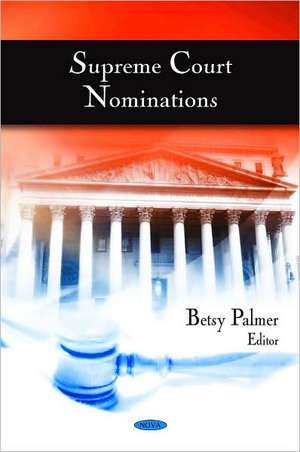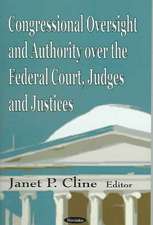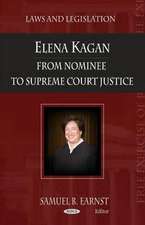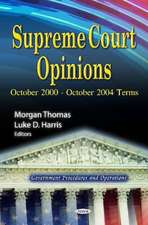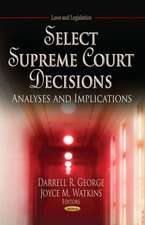Supreme Court Nominations
Editat de Betsy Palmeren Limba Engleză Hardback – 30 noi 2009
Preț: 469.91 lei
Preț vechi: 639.29 lei
-26% Nou
Puncte Express: 705
Preț estimativ în valută:
89.93€ • 94.88$ • 74.95£
89.93€ • 94.88$ • 74.95£
Carte disponibilă
Livrare economică 12-26 decembrie
Preluare comenzi: 021 569.72.76
Specificații
ISBN-13: 9781606926543
ISBN-10: 1606926543
Pagini: 256
Ilustrații: tables
Dimensiuni: 187 x 263 x 22 mm
Greutate: 0.71 kg
Ediția:New.
Editura: Nova Science Publishers Inc
Locul publicării:United States
ISBN-10: 1606926543
Pagini: 256
Ilustrații: tables
Dimensiuni: 187 x 263 x 22 mm
Greutate: 0.71 kg
Ediția:New.
Editura: Nova Science Publishers Inc
Locul publicării:United States
Cuprins
Preface; Supreme Court Appointment Process: Roles of the President, Judiciary Committee, & Senate; Supreme Court Nominations Not Confirmed, 1789-2007; Supreme Court Nominations: Senate Floor Procedure & Practice, 1789-2006; Supreme Court Nominations, 1789-2005: Actions by the Senate, the Judiciary Committee, & the President Speed of Presidential & Senate Actions on Supreme Court Nominations, 1900-2005; Index.
